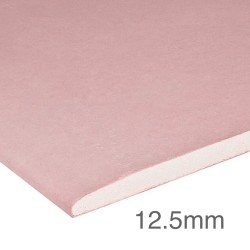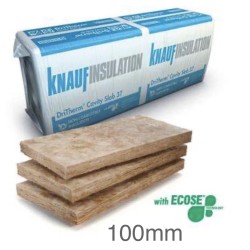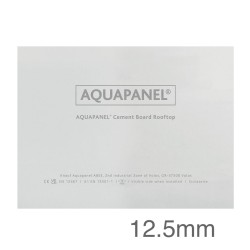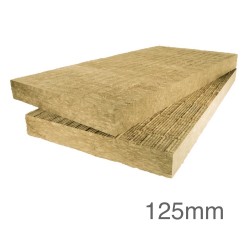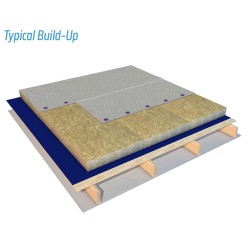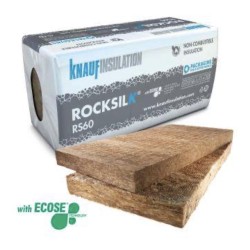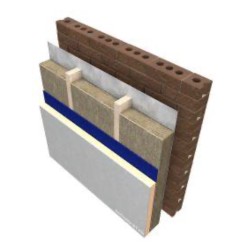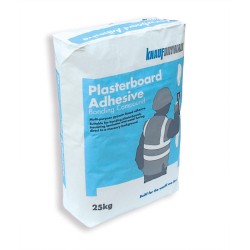42.5mm Knauf Polyfoam Linerboard - 30mm Extruded Polystyrene (XPS) and 12.5mm Plasterboard
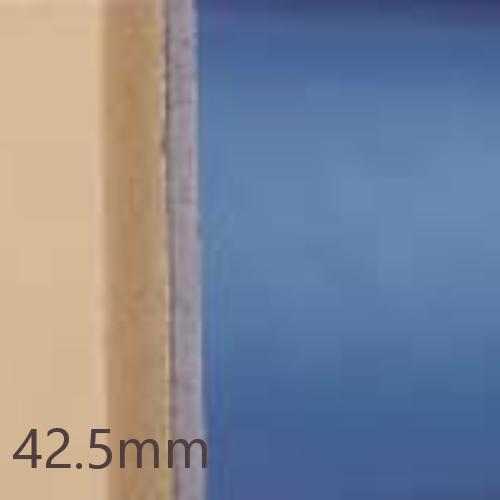
42.5mm Knauf Polyfoam Linerboard - 30mm Extruded Polystyrene (XPS) and 12.5mm Plasterboard
- Product Code: A1-2143
- Delivery Time: 5 - 7 days
- Brand: Knauf (Tech. support: 08000304135)
- Model and Size: 1200x2400mm - 2.88m2
- Weight: 26.60kg
Product discontinued.
Click Get Best Price to request a quotation and we will recommended an equivalent product.
Our ratings on 01-09-2025:

4.8 out of 5
42.5mm Knauf Polyfoam Linerboard - 30mm Extruded Polystyrene (XPS) + 12.5mm Plasterboard
Width: 1200mm
Length: 2400mm
Density: 217kg/m3
Weight/m2: 9.23kg
Weight: 26.6kg
Thermal Conductivity: 0.030W/mK
R-Value: 1m2K/W
42.5mm Polyfoam Linerboard is a high performance, tapered edge, rigid composite internal insulated plasterboard with 30mm extruded polystyrene (XPS) bonded to 12.5mm plasterboard. It allows the thermal insulation and lining of internal, semi-exposed and exposed walls in one simple operation. The rigidity of the Polyfoam liner offers an excellent support to the finished internal lining and has high impact resistance. helping to prolong its service life.
CHARACTERISTICS
- Simple to install,
- Easy to handle and non-irritant, no special protective clothing is required to install them.
- Easily cut with a sharp knife, scored and snapped open to get a clean cut.
- Can be fixed with adhesives or mechanically fixed or in a combination of both,
- Low moisture absorption,
- Can be installed on damp walls and in damp cavities,
- High thermal performance,
- Stability in the long term usage,
- High resistance to impact,
- High quality facing material,
- Plasterboard offers excellent fire performance and the Polyfoam XPS insulation contains a flame retardant to inhibit localised ignition.
APPLICATION
- Internal insulation and lining of masonry walls in new build or refurbishment,
- Internal insulation and lining of metal frame and timber frame walls in new build or refurbishment,
- Housing,
- Offices,
- Schools,
- Hospitals,
- Retail,
- Public buildings
Precautions
- The boards should not be left exposed to prolonged sunlight as this will result in surface degradation.
- If stored outside for extended periods, they should be covered with opaque or light coloured sheeting.
- Do not store the boards close to open flame or other ignition source.
- Avoid volatile compounds and chemicals such as solvents in contact with the boards.
- The surface be lined should be clean and dry with all wall paper and loose plaster or other material removed.
- Holes for services, other fixtures etc should be cut before fixing the board.
- Boards can be either sawn or cut with a sharp knife.
- Linerboard can be fixed to the substrate with adhesive (dabs or around the perimeter) and mechanically fixed or both the methods.
- With both adhesive and dab fixing methods, two mechanical fixings are required at the top of each board, 25mm in from the edge. They should penetrate at least 35mm into a solid substrate.
- When fixing to a metal or a timber frame, the studs of the timber frame should be at least 50mm wide and placed at 600mm maximum centres, with additional framing to provide support at all board edges.
- On a timber frame, the Linerboard is secured by nailing at 150mm maximum centres, at least 12mm in from the board edge. The fixings should be long enough to penetrate at least 25mm into the timber.
- On a metal frame, the Linerboard is secured using self tapping screws at 200mm maximum centres, located at least 12mm in from the board edge. The screws should be long enough to penetrate at least 15mm into the frame.
- Standard plasterboard jointing techniques are used to finish the board ready for direct application of paint or wallpaper.
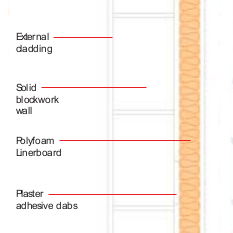
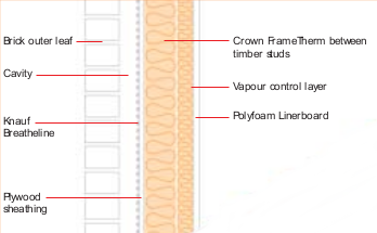
Note: This product can be supplied with different types of plasterboards, such as Cement based boards, Gypsum boards, Calcium Silicate boards, OSB, Plywood etc.
Brand: Knauf
Model and Size: 1200x2400 - 2.88m2
Delivery Time: 1 - 2 days
12.5mm Knauf Fire Panel Plasterboard is a high-performance gypsum-based board designed to provide enhanced fire resistance. It is a popular choice for use in walls and ceilings where fire safety is a key consideration. Knauf Fire Panel features a core composed of a specially formulated gypsum compou..
£23.34
£28.01 inc VAT
Brand: Knauf
Model and Size: 1200x455mm - 3.28m2
Delivery Time: 3 - 5 days
100mm Knauf DriTherm 32 Ultimate Cavity Slab is a high-performance insulation product specifically designed for use in external full-fill masonry cavity walls. These water-repellent glass mineral wool slabs provide exceptional thermal performance, making them an ideal choice for enhancing energy eff..
£46.72
£56.06 inc VAT
Brand: Knauf
Model and Size: 900mm x 2400mm - 2.16m2
Delivery Time: 7 - 10 days
12.5mm x 900mm x 2400mm Knauf Rooftop Aquapanel Cement Board is an extremely durable construction board highly resistant to moisture, mould and mildew growth. It can be used as a cover board above the insulation and as a substrate to take on the waterproofing layer, and as a substrate board on the s..
£119.03
£142.84 inc VAT
Brand: Knauf
Model and Size: 1200mm x 1000mm - 24m2
Delivery Time: 8 - 12 weeks
125mm Knauf Rocksilk Krimpact Flat Roof Slab Extra is a high-performance insulation solution designed specifically for flat roofing applications. Manufactured from non-combustible stone wool, this product offers excellent thermal insulation properties, helping to maintain comfortable indoor temperat..
Brand: Knauf
Model and Size: 1200x600 - 2.88m2
Delivery Time: 1 - 2 days
100mm Knauf Rocksilk RS60 Universal Insulation Slab is a high-performance mineral wool insulation product suitable for a variety of applications. Manufactured from rock mineral wool using Knauf's unique bio-based ECOSE Technology binder, it provides excellent thermal and acoustic insulation properti..
Guide Price: £41.24
£49.49 inc VAT
Brand: Knauf
Model and Size: 25kg - bag
Delivery Time: 1 - 2 days
25kg Knauf Plasterboard Adhesive is a multi-purpose gypsum-based adhesive for use with Knauf metal furring channel and for direct bonding of plasterboard and insulating laminates. It can be applied directly to most masonry substrates. The plasterboard is fixed to the substrate using the 'Dot and Dab..
£13.13
£15.76 inc VAT
































































































































